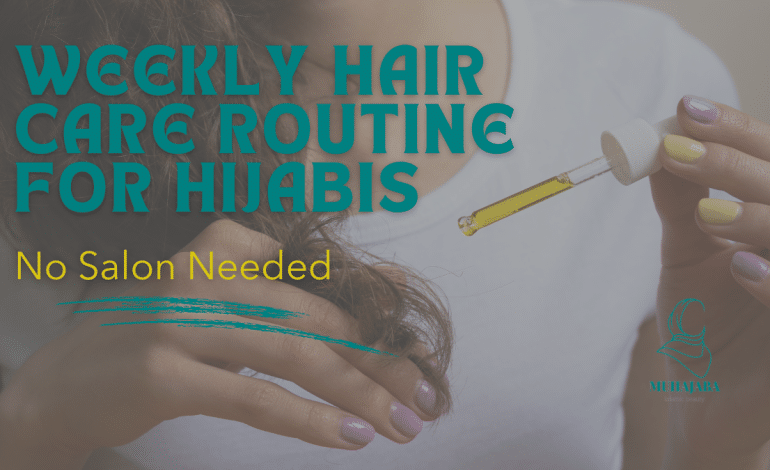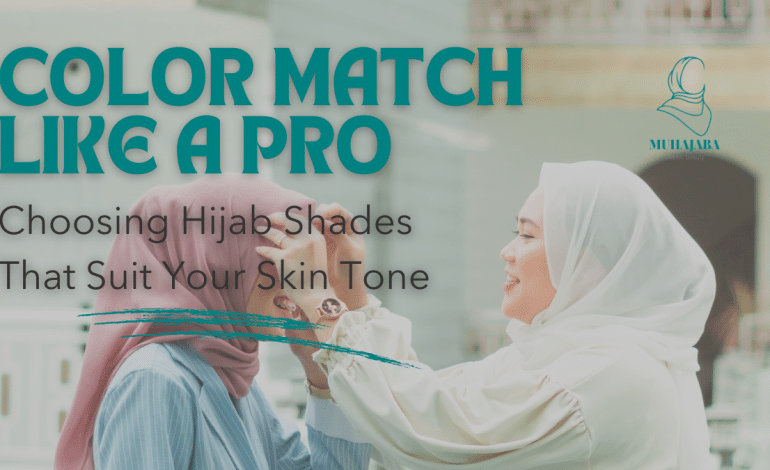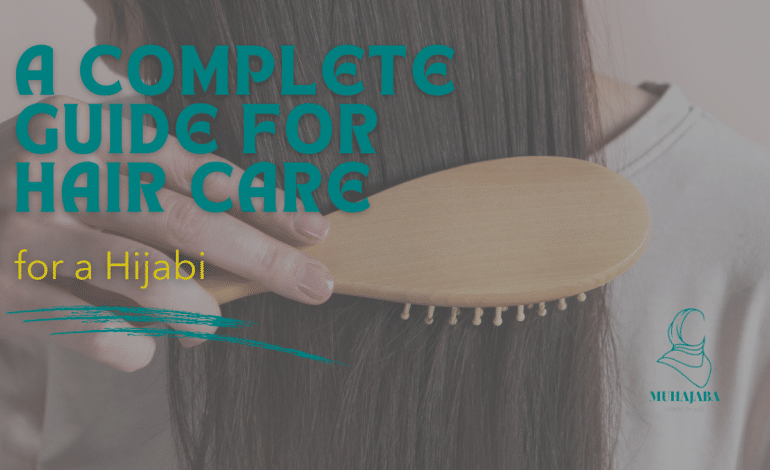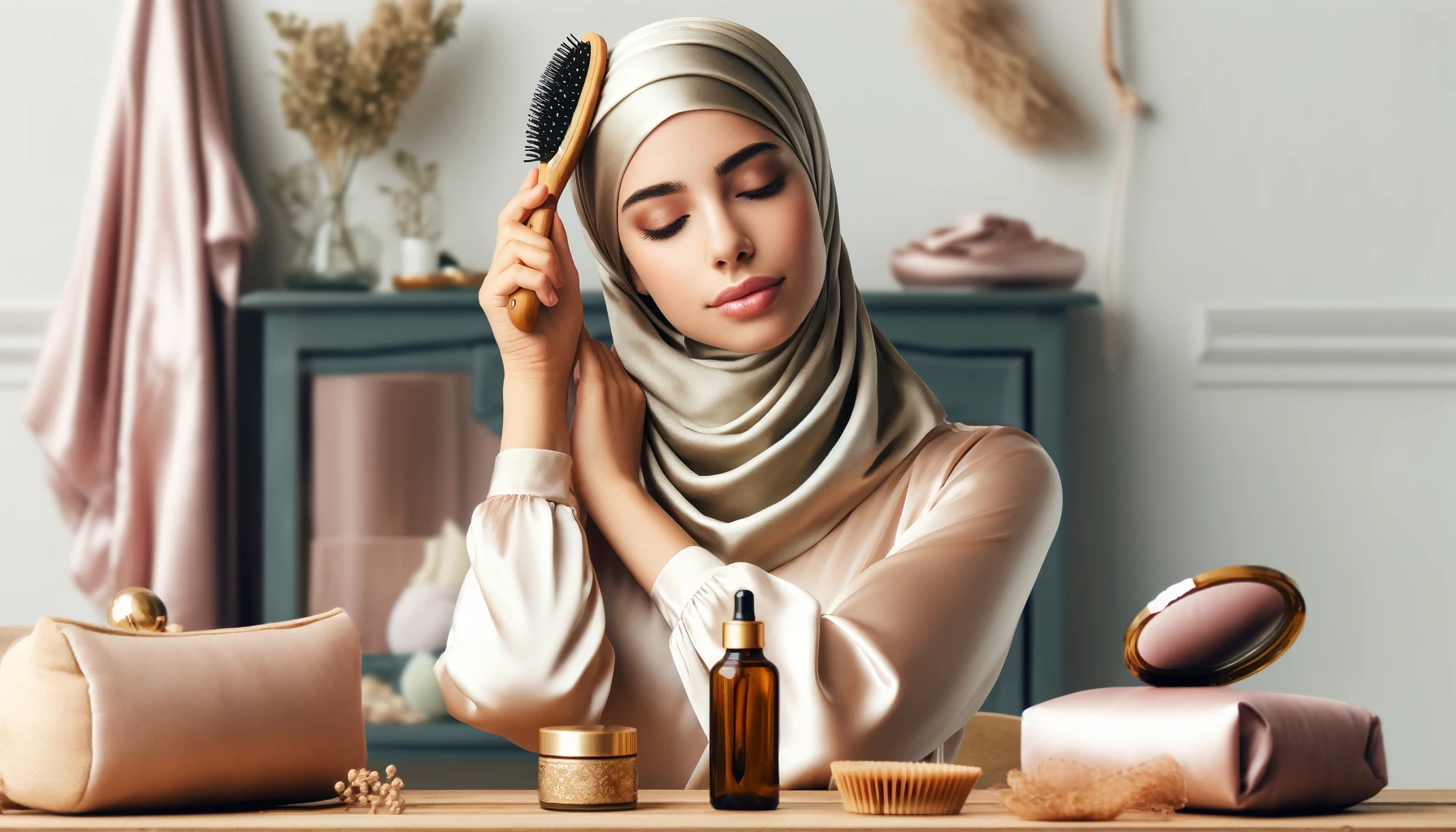Weekly Hair Care Routine for Hijabis – No Salon Needed

Wearing the hijab protects your hair from the sun and dust — but let’s face it, it also hides a lot of what’s happening underneath.
Dryness. Breakage. Flat roots. It’s easy to forget about hair care when your strands are covered all day. But here’s the truth: just because it’s covered, doesn’t mean it should be neglected.
You don’t need expensive treatments or salon visits to keep your hair healthy. All you need is a simple, weekly hair care routine tailored for hijabis.
Let’s get into it 👇
🗓️ Your Weekly Hair Care Routine – Hijabi Edition
Day 1: Deep Cleansing + Scalp Massage
🧴 Use a sulfate-free shampoo to remove product buildup, sweat, and oil from your scalp.
💆♀️ Follow with a 5-minute scalp massage using your fingertips or a scalp brush to boost circulation and hair growth.
✅ Pro Tip: Always wash your hair in lukewarm water — hot water strips natural oils.
Day 2: Deep Conditioning Mask
Your strands deserve some love too. Use a moisturizing mask or DIY treatment (like coconut oil + honey) and leave it on for 30–45 minutes.
✅ Pro Tip: Use a shower cap or warm towel to help the treatment penetrate deeper.
Day 3: Let Your Hair Breathe
Keep your hair down while you’re at home. Let it air dry naturally and avoid tying it up tightly.
This is essential to prevent tension, breakage, and thinning around the hairline.
Day 4: Light Oil Massage
Massage a lightweight oil (like argan or sweet almond oil) into your scalp and ends. Don’t overdo it — just enough to moisturize without feeling greasy.
✅ Pro Tip: Focus on your ends if you have dry or split-prone hair.
Day 5: Styling + Underscarf Care
If you’re heading out, protect your hair with a silk-lined or breathable cotton underscarf. Avoid tight buns and rotate your parting to prevent repeated pressure on one area.
Day 6: Quick Rinse or Dry Shampoo
If your scalp feels oily, rinse with water or use a natural dry shampoo to freshen things up without overwashing.
✅ Pro Tip: Over-washing strips oils; aim to wash only 1–2 times a week.
Day 7: Trim or Detangle + Scalp Check
Use a wide-tooth comb to gently detangle from the ends up. This prevents breakage and helps you spot any thinning areas or irritation.
✂️ Trim split ends every 6–8 weeks for healthier growth and smoother texture.
💇♀️ Why This Routine Works for Hijabis
✔️ Prevents hair fall and breakage from tight styles
✔️ Keeps the scalp healthy and balanced
✔️ Restores moisture often lost from friction with underscarves
✔️ Promotes consistent growth without professional help
❓ Frequently Asked Questions
Q1: How often should hijabis wash their hair?
A: 1–2 times per week is ideal. Washing too often can dry out your scalp, especially if you cover your hair daily.
Q2: Can I do oiling on dirty hair?
A: Light oiling is fine, but deep oil treatments should always be done on clean hair to avoid trapping dirt and clogging scalp pores.
Q3: Is it okay to tie wet hair under the hijab?
A: No! Always dry your hair completely before covering it. Wet hair is fragile and more prone to breakage and scalp issues.
✨ Final Thoughts
Your hair may be covered, but it still deserves care. By following this easy weekly routine, you’ll start to see stronger, softer, and healthier hair — without stepping foot in a salon.
And remember: hijab and hair care go hand in hand. Taking care of what’s underneath is part of the beauty of self-respect and self-care.
📲 Stay Connected
Ready for more hair care tips that actually work for hijabis?
👉 Follow us on social media for tutorials, real hijabi stories, and expert advice.
👉 Check out www.mohajba.com for natural DIY recipes, hijab-friendly products, and scalp care secrets just for you.






